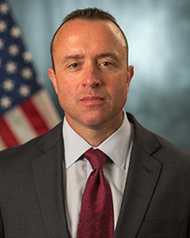

The number of carjackings has exploded in major US cities in the past two years, along with a less astonishing increase in car thefts overall, according to the National Insurance Crime Bureau.
NICB President and Chief Executive Officer David J. Glawe told the Senate Judiciary Committee during a hearing Tuesday that from 2019 to 2021 the number of carjackings increased 286% in New York City, 238% in Philadelphia, 207% in Chicago, 200% in Washington D.C., 159% in New Orleans and 89% in Denver. Glawe said his organization “pieced together” those figures from a variety of sources because there is no comprehensive national data that parses out carjacking from car theft in general.
Nonetheless, the limited data that is available shows a “staggering” increase in the frequency of the violent crime, Grawe said.

“One disturbing sub-plot laying underneath these bleak numbers is the fact that many of the carjackings are being committed by juveniles – sometimes by kids as young as 11 years old,” he told the committee. “In Chicago, juveniles were involved in nearly half of all carjackings in 2020.”
The NICB said nationally car thefts increased 16.5% from 2019 to 2021, and 30% since 2017. But Colorado saw a 79% increase from 2019 to 2021, Wisconsin 74%, Vermont 64%, New York State 59% and Washington D.C. 52%.
Law enforcement officials testified that the rise in carjacking numbers comes along with a general nationwide increase in violent crime over the past two years. For example, the number of homicides in the nation’s largest cities increased 49% from 2019 to 2021, said Dallas Police Chief Eddie Garcia, speaking on behalf of the Major Cities Chiefs Association.
Garcia said financial gain is one motive. The rise in value of the precious metals inside of catalytic converters has spawned a national crime spree. Some carjackers take stolen vehicles directly to chop shops to be sold for parts. Criminals also steal cars at gunpoint and then use the vehicles to use during robberies and drive-by shootings, he said.
But some carjackings appear to be motivated by a a thirst for “clout” and to gain notoriety on social media.

“The most prominent example is the ‘Kia Boys’ in Milwaukee,” Garcia said. “As part of this disturbing trend, groups of juveniles will steal vehicles, primarily Kias and Hyundais, and take them for joyrides. They’ll then post videos on social media in a bid to outdo each other.”
Technology can be used to combat the problem. Cook County Sheriff Thomas J. Dart told the committee that the geolocation equipment installed in most vehicles since 2015 is one of the most effective tools available to law enforcement.
But Dart said while some vehicle manufacturers are helpful and willing to assist police investigations, others are reluctant to help track stolen vehicles. He said one victim whose car was carjacked while stopping for gasoline in a Chicago suburb contacted the manufacturer and asked for help in tracking the vehicle, with not success. After the sheriff’s office got involved, it took two days to recover the vehicle. Dart said by the time the car had been used in at least two other crimes, including another carjacking.
“We believe auto manufacturers can be a great ally in this battle,” Dart said. “They already innovated the technologies needed to track the stolen vehicles. Now they must lead the way in developing a system to communicate in a consistent way with responding law enforcement.”
John Bozzella, president and CEO of the Alliance for Automotive Innovation said the industry is working on it. Bozzella told the committee that connectivity capability of vehicles varies widely among manufacturers. He said even if vehicles are tracked, the accuracy of the location service can be compromised by signal strength or even by being disabled by savvy criminals.
Exposure to liability is also an issue, Bozzella said. He said state privacy laws may interfere with a manufacturer’s ability to cooperate with a request to track a vehicle. Also, there needs to be a way to verify that a tracking request actually is being made by a law enforcement officer, he said.
“Further, automakers may have contractual limitations within their customer agreements on when location may be provided to third parties, including law enforcement,” Bozella said. “Therefore, this is a consideration that must be taken to account when evaluating different policy or technical solutions to this challenge.”
About the photo: The funeral procession leaves Grace Church of Middleburg Heights, Ohio, following the service for Cleveland police officer Shane Bartek, who was fatally shot during a carjacking New Year’s Eve, Tuesday, Jan. 11, 2022. (Joshua Gunter/Cleveland.com via AP)